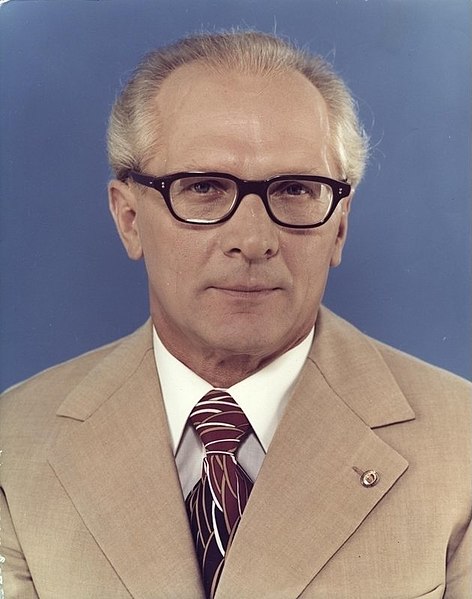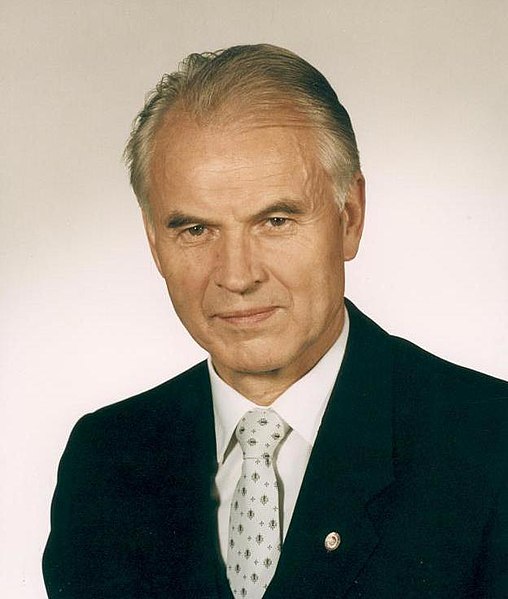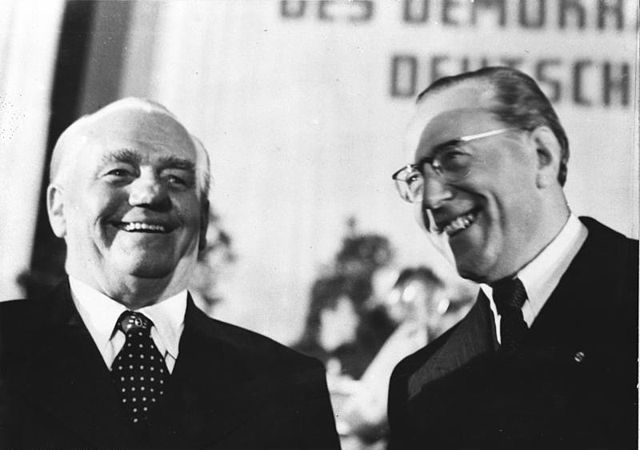Lists of political office-holders in East Germany
These are lists of political office-holders in East Germany. The political leadership of East Germany was distributed between several offices. However, until the Volkskammer removed a section in the GDR's constitution guaranteeing their monopoly on political power on 1 December 1989, the Socialist Unity Party of Germany (SED) held ultimate power and authority over state and government. Thus, the head of the SED's Politburo of the Central Committee was the de facto leader of the country.
Image: Opvolger van Pieck, Walter Ulbricht, Bestanddeelnr 911 5926 (cropped)
Image: Bundesarchiv Bild 183 R1220 401, Erich Honecker
Image: Bundesarchiv Bild 183 1984 0704 400, Egon Krenz
Image: Bundesarchiv Bild 183 1989 1117 431, Hans Modrow, Dr
East Germany, officially known as the German Democratic Republic, was a country in Central Europe from its formation on 7 October 1949 until its reunification with West Germany on 3 October 1990. Until 1989, it was generally viewed as a communist state and described itself as a socialist "workers' and peasants' state". The economy of this country was centrally planned and state-owned. Although the GDR had to pay substantial war reparations to the Soviets, it became the most successful economy in the Eastern Bloc.
GDR leaders: President Wilhelm Pieck and Prime Minister Otto Grotewohl, 1949
SED First Secretary, Walter Ulbricht, 1960
Erich Honecker, head of state (1971–1989)
Chancellor of the Federal Republic of Germany (West Germany) Helmut Schmidt, Chairman of the State Council of the German Democratic Republic (East Germany) Erich Honecker, U.S. president Gerald Ford and Austrian chancellor Bruno Kreisky signing the Helsinki Act







